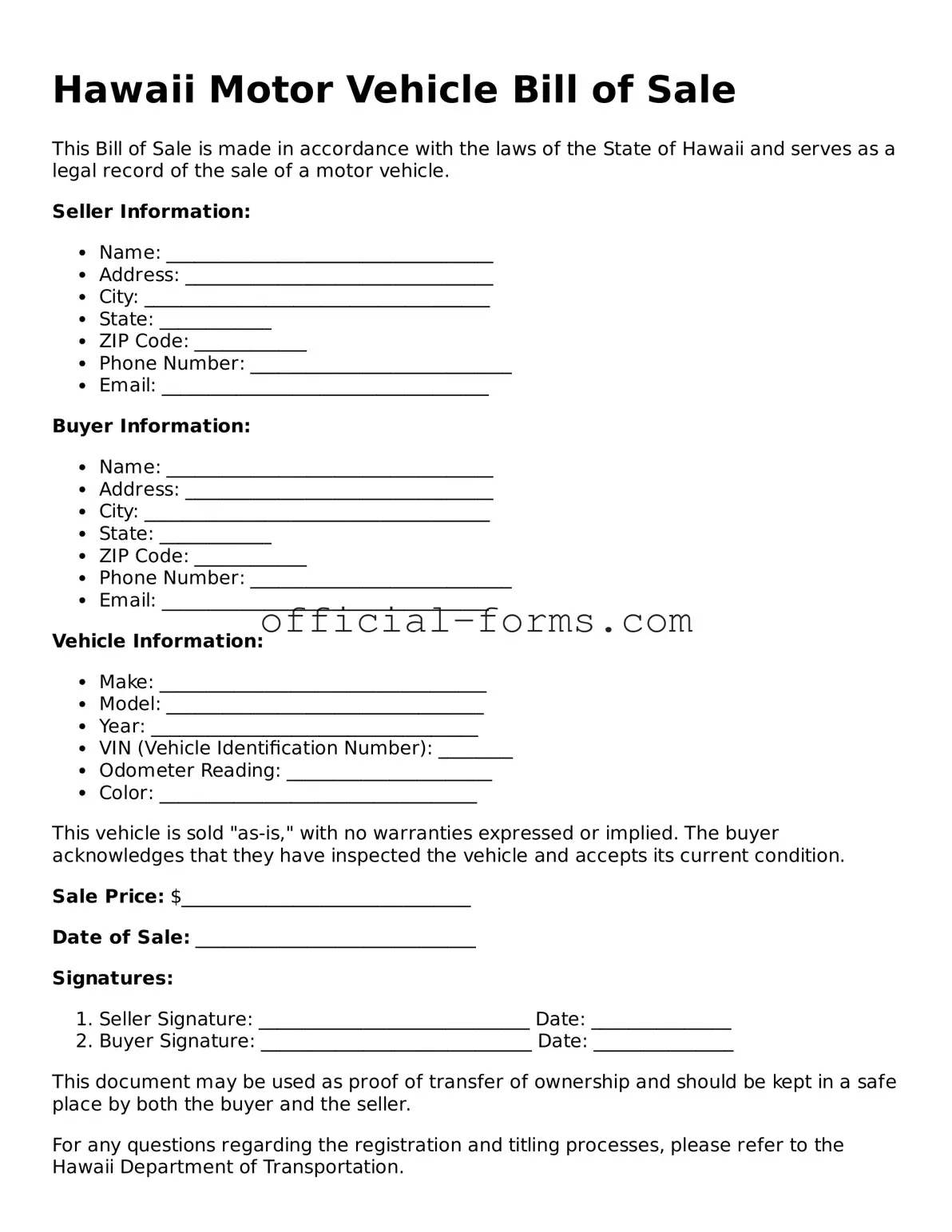When filling out the Hawaii Motor Vehicle Bill of Sale form, many people make common mistakes that can lead to issues down the line. One frequent error is not providing complete information about the vehicle. This includes omitting details such as the Vehicle Identification Number (VIN) or the make and model. Each piece of information is crucial for identifying the vehicle accurately.
Another mistake often seen is failing to include the correct date of the sale. The date is important for legal purposes and may affect the transfer of ownership. If the date is left blank or incorrect, it can create confusion regarding when the sale actually took place.
People sometimes forget to include both the buyer's and seller's signatures. A signature is a vital part of the document. Without it, the bill of sale may not be considered valid. Both parties need to sign to confirm that the transaction is legitimate and agreed upon.
Additionally, some individuals neglect to state the sale price clearly. The price should be explicitly written out, as this helps avoid disputes later. Leaving this information vague can lead to misunderstandings between the buyer and seller.
Another common oversight is not providing the necessary contact information for both parties. Including phone numbers or addresses is important for future communication. If issues arise after the sale, having accurate contact information can make resolving them much easier.
Some people also fail to check for any liens on the vehicle. A lien means that there is a legal claim against the vehicle, usually due to unpaid loans. If a lien exists and is not disclosed, the buyer could face serious problems after the purchase.
Finally, many individuals do not make copies of the completed bill of sale. Keeping a copy is essential for both the buyer and seller. This document serves as proof of the transaction and may be needed for registration or other legal purposes in the future.
